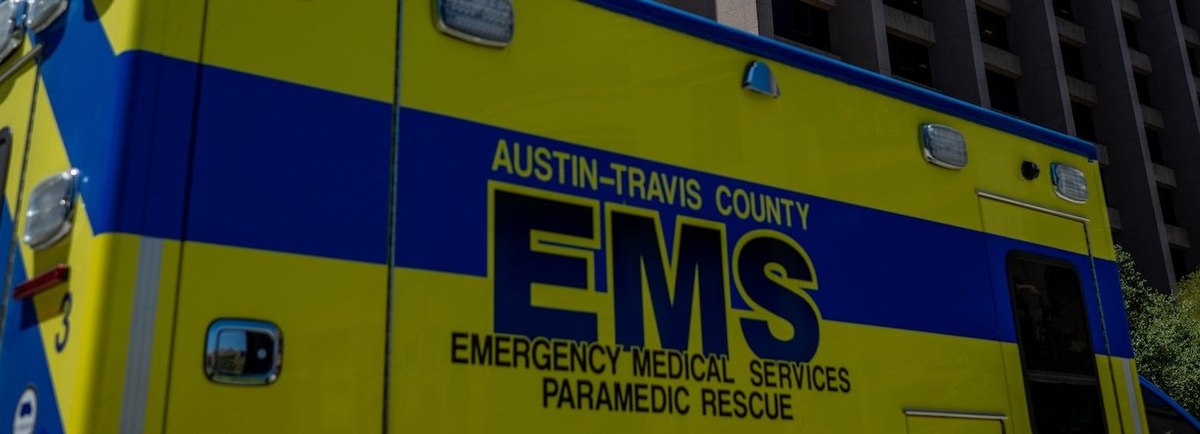Health care in the United States is expensive for many Americans. While 92% of Americans were insured through their employer, the government or another party, in 2022, 100 million — or 41% Americans — had medical debt. Some of this debt comes from unexpected charges from hospitals and other providers, which was limited with the No Surprises Act in 2022. A notable exception from the law was ambulance rides.
Nearly half of Americans (47%) have been transported as a patient by an ambulance. A May 2024 YouGov survey found that Americans of certain backgrounds and identities are more likely to use the service. Americans with a household income of less than $50,000 are likelier than Americans with a household income of $100,000 or more to say they have used an ambulance service (57% vs. 34%). Americans 65 and older are three times as likely as adults under 30 to have been (63% vs. 22%). Greater shares of white (50%) and Black (47%) Americans have been in an ambulance than Hispanic (37%) Americans. There is no real political divide: 47% of Democrats, 45% of Independents, and 51% of Republicans have used an ambulance.
Among Americans who have been transported in an ambulance, only 15% waited less than 5 minutes the last time they rode as a patient in an ambulance. Half waited between 6 minutes and 20 minutes. 7% waited 21 minutes to an hour for an ambulance and 1% had to wait over an hour.
The costs for an ambulance trip spans the gamut — for both insured and uninsured Americans. While 61% of Americans who have used an ambulance and were insured during their last ride ended up not having to pay anything out of pocket, this was the case for only one-quarter of uninsured Americans. The cost for using this service was much steeper for uninsured Americans. 22% who have used an ambulance and were uninsured during their last ride in one had to pay more than $2,000 out of pocket, compared to 1% of insured Americans.
The amount of money owed for their last ambulance trip was surprisingly high to 37% of Americans who have taken one. Another 30% say that the bill was about what they had expected. Only 3% of Americans said the cost was less than expected. 84% who owed more than $300 said the cost was more than expected. 60% who paid between $100 and $300 say they had the same shock.
While 50% of Americans have never ridden in an ambulance, fewer than 50% of Americans have never needed an ambulance. 23% of Americans say that during a medical emergency in which they needed immediate transportation they purposely did not call an ambulance due to the cost. 8% of Americans say this and also have never used an ambulance.
91% of Americans who could not afford the potential cost of an ambulance but needed medical care ended up going to the hospital the last time this happened. They were typically driven to the hospital. 48% of these Americans were driven by a friend or family member and 13% used a rideshare service, while 18% of Americans drove themselves to the hospital. 8% rode an ambulance anyway, because of someone else's decision.
Due to the costs of ambulance rides and the number of people opting out of using ambulances, a federal committee in 2023 proposed closing the loophole in the No Surprises Act and putting a $100 cap on the cost of ambulance rides. This idea has support from a majority of Americans. Slightly more Democrats (79%) than Independents (67%) and Republicans (74%) would support the proposal.
Even more Americans would support a law requiring insurance to pay for an ambulance (84%). Like with the proposed $100 cap, requiring insurance to pay for ambulances has more support among Democrats (91%) than Republicans (80%).
Despite the costs, 65% of Americans who have been transported in an ambulance were satisfied with their most recent experience. Older Americans and women expressed more satisfaction with their experiences than younger adults and men did.
— Taylor Orth contributed to this article.
Related:
- A global look at consumer trust in hospitals and pharmaceutical companies with personal data
- Would you ever call a taxi or ride‑sharing service (e.g. Uber, Lyft) to get to the hospital in case of an emergency?
- What do Americans want in a primary care provider? An honest practitioner who takes their insurance
- Comparing American and British attitudes on health care in 2022
See the results for this YouGov poll
Methodology: The poll was conducted online among 1,141 U.S. adult citizens from May 14 - 16, 2024. A random sample (stratified by gender, age, race, education, geographic region, and voter registration) was selected from the 2019 American Community Survey. The sample was weighted according to gender, age, race, education, 2020 election turnout and presidential vote, baseline party identification, and current voter registration status. Demographic weighting targets come from the 2019 American Community Survey. Baseline party identification is the respondent’s most recent answer given prior to November 1, 2022, and is weighted to the estimated distribution at that time (33% Democratic, 31% Republican). The margin of error for the overall sample is approximately 3.5%.
Image: Getty (Brandon Bell / Staff)











